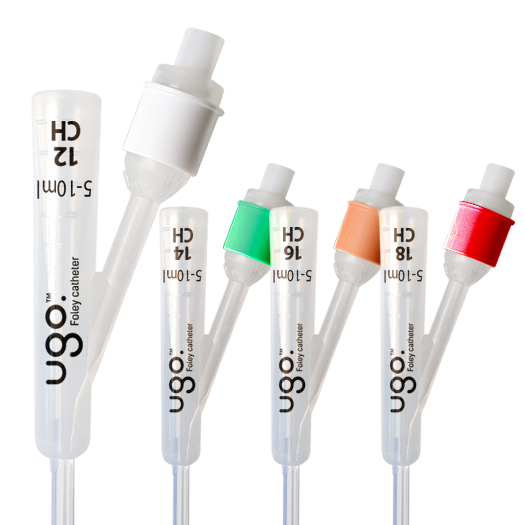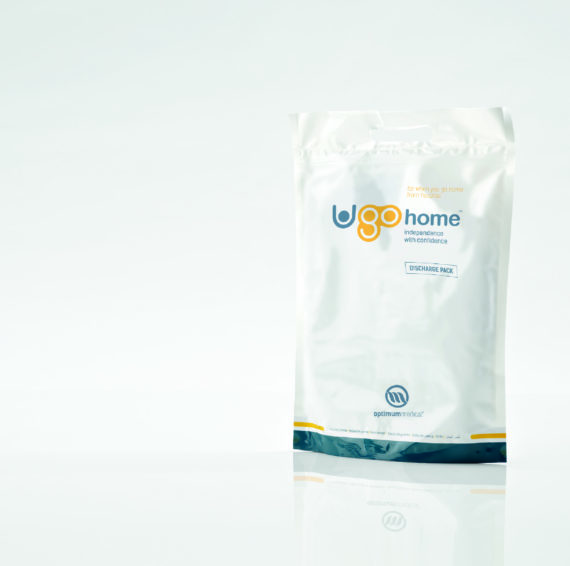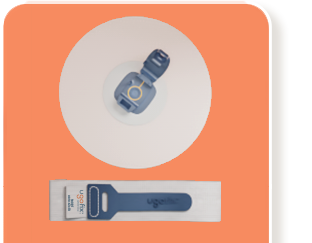Catheter Guide
At Optimum Medical we understand that when you first start using a catheter you may be wary of what you can and can’t do, which is completely understandable. However, using a catheter shouldn’t stop you from going about your day as you normally would.
We’ve built this handy list of FAQs that should help clear up everything you should need to know.

What is a catheter?
A urinary catheter is a tube used to empty the bladder. Catheters can either be inserted through the tube that carries urine out of the bladder (urethral catheter) or through an opening made in your lower tummy (suprapubic catheter).
What are the different types of catheters?
Indwelling Urinary Catheters: Indwelling catheters are designed to remain inside the bladder for a longer period and are usually changed every 4-8 weeks by a healthcare professional. The catheter can either be inserted through the urethra – a urethral catheter – or through the stomach – a suprapubic catheter. To keep it from sliding out, a tiny balloon at the end of the catheter is inflated with water.
Indwelling catheters are generally called Foley catheters and are made from silicone rubber or natural rubber and come in different sizes. Don’t worry, though, you don’t have to know which one is best for you – your nurse or doctor will work this out for you.
Suprapubic Catheters: a suprapubic catheter is inserted through a small hole in the abdomen. The procedure is generally done in hospital under general, epidural, or local anaesthetic. This will be different for every hospital and your nurse or doctor will be able to give you detailed information on how it will be done. The catheter itself is a flexible, hollow tube that can be made from certain types of plastic, silicone, or rubber.
Intermittent Catheters: An intermittent catheter is inserted into the urethra on demand to empty your bladder and then removed again once your bladder is empty. If you are using an intermittent catheter, you will be taught to catheterise yourself. Don’t worry though, it’s quite a straightforward technique that can be performed by most people fairly easily. Even children as young as seven or eight years old can be taught how to catheterise!
Can I travel whilst using a catheter?
It is still important to plan when and where you might be able to use your catheter, especially if you’re self-catheterising.
As long as you plan, then there is no reason to not travel long distances, or even flying overseas. Planning and knowing what to expect at each point of the journey is key to reducing anxiety, find out all the information you need below.
READ: Flying with a catheter➯
Can I sleep whilst wearing a catheter?
In short, yes! Overnight, a leg bag might not be the best solution as this would mean that you’d have to get up to empty it. Instead, you can use an overnight drainage bag which has been designed with your beauty sleep in mind – such as our Ugo 2L Drainage bag. They generally have a volume of 2 litres and should easily hold all the urine drained by your catheter during the night without you having to empty it.
You can either connect the drainage bag to your leg bag (make sure the tap is switched to open!) or, if you prefer, you can remove the leg bag and attach the overnight bag directly to your catheter. You can keep your drainage bag either in a stand or hanger, whatever takes your fancy.
Can I shower or Bath whilst using a catheter?
Leave your bag or valve attached to the catheter while showering. If you have a leg bag, it must always be kept below the level of your bladder. This is because taking a bath puts you at risk for infections.
Our top tip for jumping in the shower or taking a bath? Empty your leg bag and keep a spare pair of leg bag straps or a spare leg bag sleeve in the bathroom that you don’t mind when it gets wet.
Can I swim whilst using a catheter?
If you take extra precautions before, during, and after a swim in the pool, then you should have no problems.
Hygiene is paramount when it comes to swimming with a catheter. You must only swim in water that is treated with chlorine and avoid swimming in lakes and rivers as this will increase your chances of getting an infection.
If you’re using an indwelling catheter you might want to consider using a smaller drainage bag such as the Ugo 6C, or even the Ugo Catheter Valve as they can be easily concealed and allow more movement.
Can I exercise whilst using a catheter?
You should slowly reintroduce physical activity when you first get a catheter. It’s ideal to do gentle exercises such as walking, lifting light weights or yoga.
You should make sure that your catheter is well secured so that you avoid accidentally pulling on it. We recommend using a securing device like the Ugo Fix Sleeve. You can even combine multiple fixation devices to give you extra security, such as the Ugo Fix Sleeve along with the Ugo Fix Bag Belt.
Can I have sex whilst using a catheter?
Many of us value our relationships with others and find that our caring, intimate relationships form a very important part of our everyday life. For those of us that suffer from a bladder issues or incontinence, it can be an added complication which may leave you feeling that is impossible to form any kind of intimate relationship for fear of embarrassment or judgement.
Women wearing an indwelling urethral catheter may find that taping the catheter with surgical tape to one side as a precaution during intercourse keeps the catheter from getting in the way during sexual activity.
Whereas males can bend the catheter back along the penis and hold it in place with surgical tape or a condom. Some men may need to consider introducing bladder washouts to prevent their catheter from blocking after ejaculation, but this should only be done following a discussion with a continence nurse who can explain this simple procedure.
FIND OUT MORE: Let talk about sex: Intimacy and bladder issues ➯
Written by our Nurse Specialist, Valerie Ward


